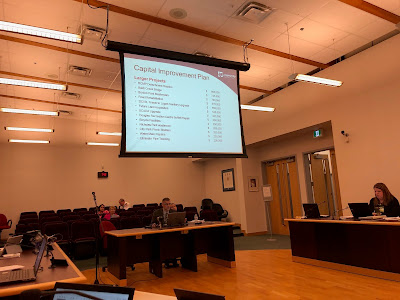Last weekend, I attended Metro Vancouver’s Council of Councils meeting. This meeting is held semi-annually, and provides an opportunity for all elected representatives from local governments throughout our region to learn and ask questions about the regional district.
On Monday, I posted some general information and highlights from last Saturday’s meeting, focusing on the regionalized utilities that provide water, sewer, and garbage services that make up the bulk of the regional district’s budget.
Today, I’ll be posting some highlights about the remaining services that we received information about at last Saturday’s Council of Councils meeting.
Regional Parks
Metro Vancouver maintains a system of regional parks and protected areas. This is likely one of the services that most people in Metro Vancouver associate with the regional district.
 |
| Map of Metro Vancouver Regional District Greenspaces. Select map to enlarge. |
Metro Vancouver’s mandate for its parks system is to connect people with natural ecosystems, not provide sports fields and playgrounds. Because of this mandate, the parks system provides an opportunity to protect threatened plants and animals in our region.
As I posted about earlier this year, one of the key strategies of Metro Vancouver is to purchase property with sensitive ecosystems to expand its parks and conservation network. One recent example is the purchase of 3.95 hectares of property to expand Campbell Valley Regional Park.
Currently there are 32 parks, greenways, and protected areas that the regional district manages.
Regional Planning
The regional district is required by provincial legislation to have a regional growth strategy. The provincial government has a good overview of what regional growth strategy do on their website. All municipalities in our region must have their official community plans consistent with regional growth strategy objectives. This is done mostly by consensus and cooperation.
The current regional growth strategy, Metro Vancouver 2040, is due for an updated. One of the major projects for the regional district will be to update our regional growth strategy. It is expected that this update will be completed sometime in 2021.
TransLink is also updating their long-term regional transportation strategy. Both TransLink’s and Metro Vancouver’s long-term strategies will be developed to align with each other.
Air Quality and Climate Change
The Metro Vancouver Regional district is unique in our province as it has regulatory powers to manage emissions from industrial emitters and other sources of air pollution such as wood burning stoves and construction equipment. It maintains an air quality monitoring network.
The district also provides resources to support its federated local governments adopt to climate change and reduce emissions. A new Climate 2050 roadmap is being developed by the regional district to provide a strategy for how our region moves forward to tackle climate change.
Metro Vancouver Housing
The regional district is one of BC’s largest affordable housing providers. It provides 9,400 people on 49 sites in 11 municipalities a place to call home. Their housing is geared towards families, seniors, and people with disabilities. The below market rents are indexed to tenants’ income. A process is underway to expand their supply of affordable rental housing by redevelop their existing sites.
I asked if they would be building additional affordable housing in municipalities that currently don’t have regional district sites. I was told that if municipalities can provide land, the district would be willing to look at building affordable housing in those municipalities.
The regional district also provides resources to help municipalities plan for affordable housing such as the recent Affordable Housing Strategy.
















